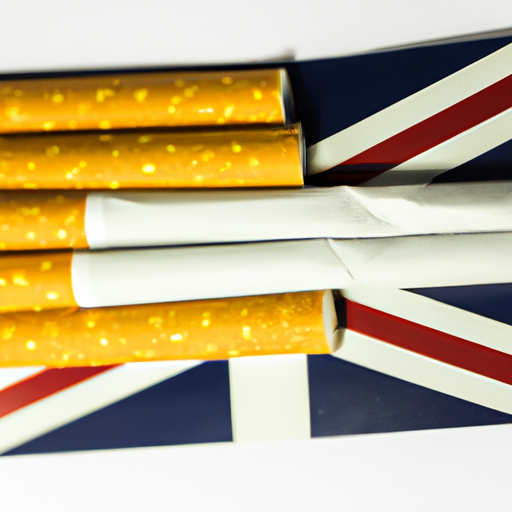
I have been living in the UK for the past 10 years and one thing that I have noticed during my time here is the widespread presence of cigarettes. From busy city streets to quaint countryside villages, it seems like cigarettes have become an ingrained part of British culture.
According to the Office for National Statistics, approximately 14.7% of adults in the UK smoke cigarettes. This may not seem like a significant number, but when you consider the harmful effects of smoking on both individuals and the wider population, it becomes a concerning statistic.
First and foremost, it is important to acknowledge that smoking is a personal choice and everyone has the right to make their own decisions. However, as a non-smoker myself, I cannot help but question the appeal of cigarettes and the societal norms surrounding them.
One aspect that stands out to me is the sheer availability of cigarettes in the UK. They are sold in almost every corner shop, supermarket, and petrol station. It has become a convenience to the point where it is easier to buy cigarettes than fruits or vegetables. This accessibility seems to normalize the act of smoking and almost encourages people to try it.
Furthermore, the packaging and advertising of cigarettes in the UK are also concerning. Despite recent regulations that require plain, standardized packaging, the brightly colored and eye-catching designs of cigarette packets still catch my attention. These packages often include words like “light” or “menthol” which can be seen as appealing to young people, who are drawn to novelty and flavors.
The advertising of cigarettes in the UK is also restricted, but it is still present in some forms. I have seen billboards with slogans such as “freedom to choose” or “treat yourself” and it is difficult to ignore the subtle messaging behind these campaigns. Additionally, the sponsorship of events by tobacco companies is still allowed in the UK, which can influence young minds to associate cigarettes with a glamorous and sophisticated lifestyle.
Another aspect that I find intriguing about cigarettes in the UK is the social acceptance of smoking. While the smoking ban in public places has undoubtedly improved the air quality for non-smokers, it has also created designated smoking areas outside of bars and restaurants. Despite these designated areas, it is not uncommon to see smokers lighting up on the street or even inside these establishments. This behavior seems to communicate that smoking is acceptable as long as it is not directly harming those around them.
Additionally, I have noticed that smoking is often portrayed in popular culture and media as a sign of masculinity, rebellion, or sophistication. The use of cigarettes as a prop in movies or television shows can influence younger audiences and create a false image of what it means to be a smoker. This illusion of coolness associated with smoking can lead to peer pressure and influence vulnerable individuals to take up the habit.
One of the most concerning aspects of cigarette use in the UK is the impact it has on public health. According to the NHS, smoking is responsible for over 74,000 deaths per year, making it the leading cause of preventable death in the UK. In addition to this, secondhand smoke is also harmful and puts non-smokers at risk for respiratory and cardiovascular diseases.
Not only does smoking have detrimental effects on individuals, but it also has a significant impact on the economy. The NHS spends an estimated £2 billion a year on treating smoking-related illnesses, and lost productivity from smoking breaks and associated illnesses costs the economy approximately £2.5 billion a year.
Moreover, the environmental impact of cigarette use cannot be ignored. Discarded cigarette butts are the most littered item in the world, and their chemicals can leach into the soil and water, polluting the environment. The production of cigarettes also contributes to deforestation and air pollution.
Despite all the negative aspects surrounding cigarettes in the UK, it is also important to acknowledge the efforts the government has made to reduce smoking rates. The smoking ban, increased taxation, and anti-smoking campaigns have all played a role in decreasing the number of smokers in the UK. However, more needs to be done to address the underlying issues that contribute to smoking in the first place.
In my opinion, education is the key to tackling the issue of smoking in the UK. We need to teach children and young adults about the dangers of smoking and how tobacco companies manipulate their marketing to target vulnerable groups. Additionally, we need to provide support and resources to help individuals quit smoking and break the cycle of addiction.
It is also crucial to address the underlying reasons why people turn to cigarettes in the first place. Many smokers start as a way to cope with stress, anxiety, or peer pressure. By providing alternative methods of stress relief and addressing mental health issues, we can prevent people from turning to cigarettes as a crutch.
In conclusion, cigarettes in the UK are a complex issue with many facets. The prevalence of smoking, the societal acceptance, and the health and environmental impacts are all important factors to consider. While efforts have been made to reduce smoking rates, more needs to be done to address the underlying issues and educate people about the dangers of smoking. Ultimately, it is up to us as individuals to make informed decisions and to create a healthier, smoke-free future for everyone.